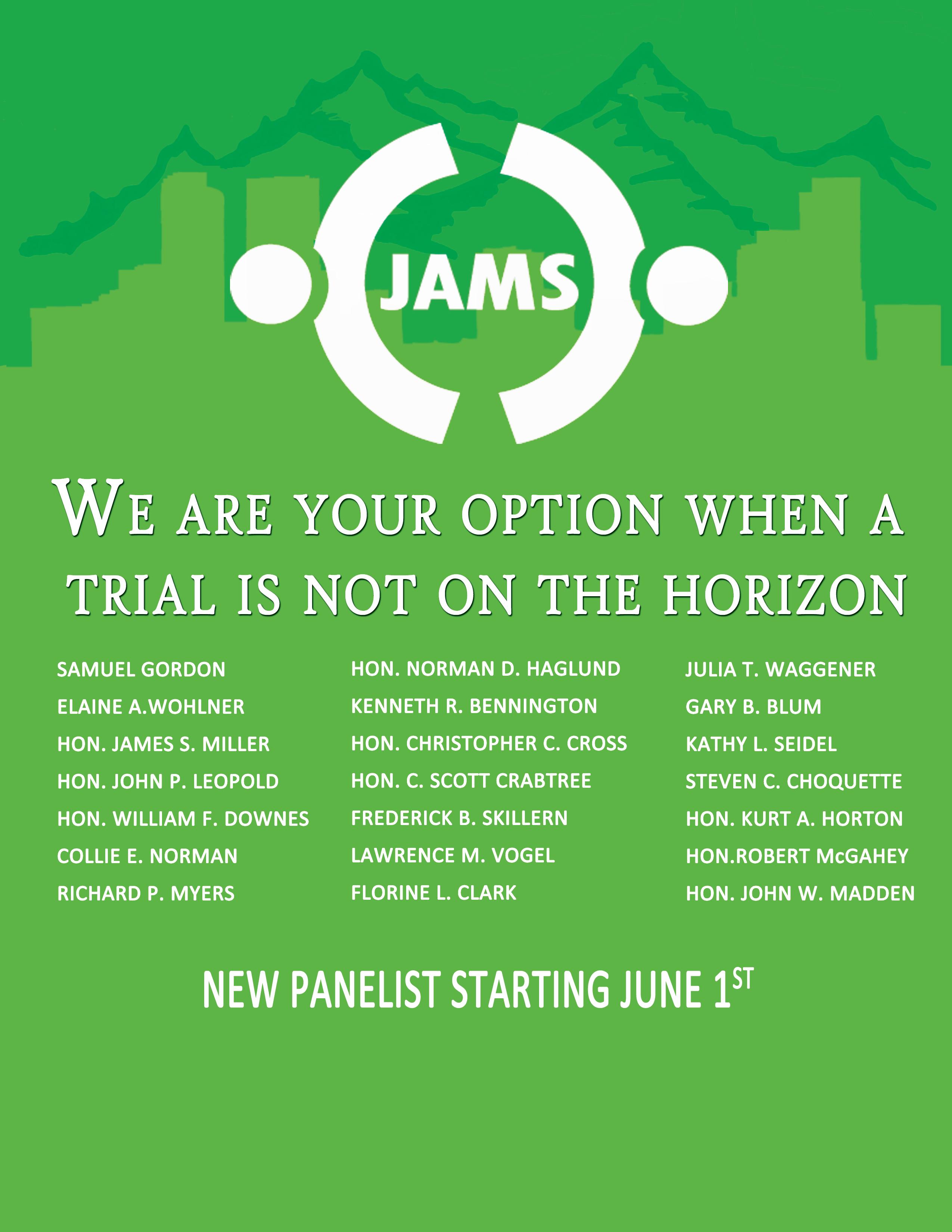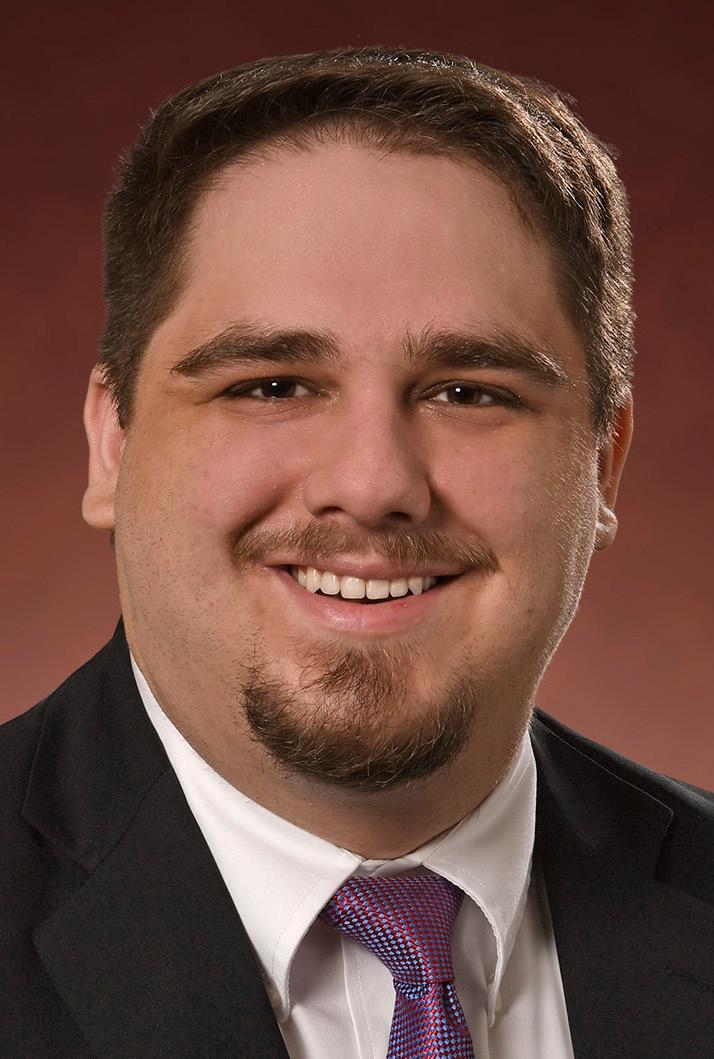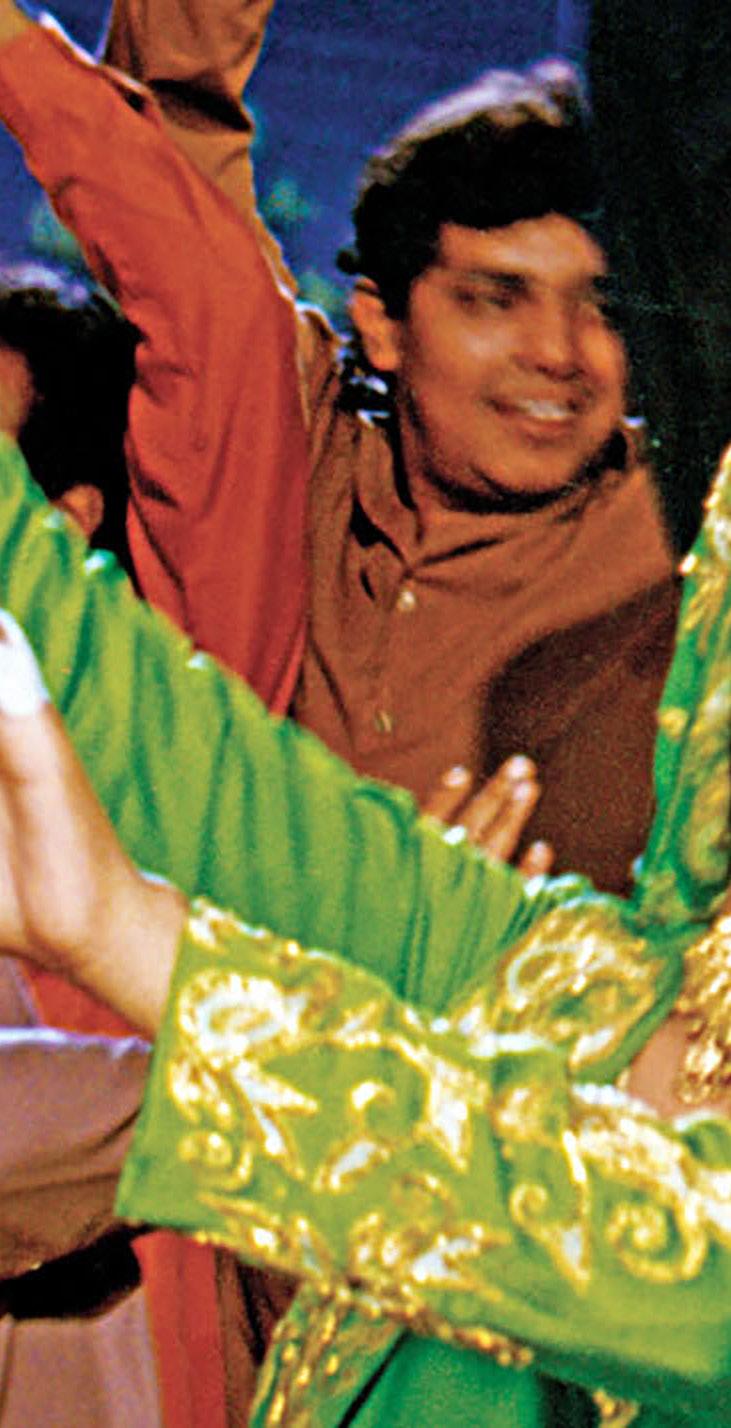
22 minute read
A Bolder Boulder
By Elizabeth Tharakan
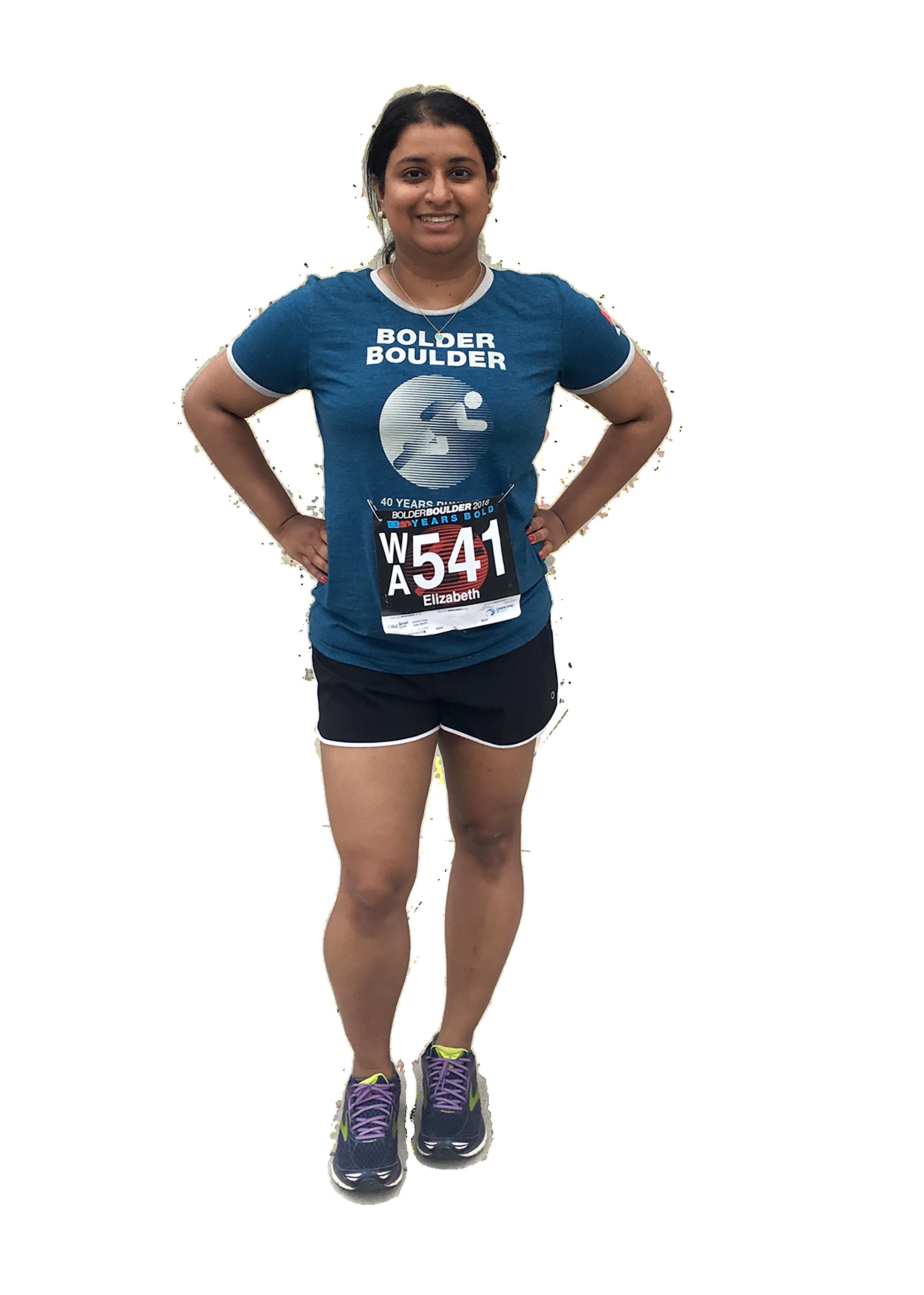
A BOLDER BOULDER

The tale of the tortoise and the hare teaches us that slow and steady wins the race. This adage applied to me on Memorial Day as I walked the Bolder Boulder 10k, finishing in two hours, 20 minutes. I think I could jog a 10k at sea level — I had been training with JackRabbit Sports in Manhattan for that distance — however, my lungs have not yet adjusted to Colorado’s thin air well enough and my bone marrow has not created enough red blood cells to transport oxygen to my system.
It probably wouldn’t have made a huge amount of difference in my time. I’m a notoriously slow runner, but I always attend scheduled group runs and complete them. Last fall, I took inspiration from Angela Duckworth’s Grit. It recounted that the West Point students who made it through the rigorous, 7-week Beast Barracks boot camp were not the students with the highest Whole Candidate admissions scores but rather those who possessed a never-give-up attitude. “Our potential is one thing. What we do with it is quite another,” Duckworth wrote. Showing up for training is half the job. I’m proud of myself for my discipline and drive, which has helped me accomplish goals for which I might not have natural aptitude, such as completing a 10k without getting pulled off the course.
I was asking some of my housemates at dinner last night whether passion or dedication was more important in being successful. The consensus was that both were vitally important, but that passion sets a direction and dedication moves you forward along the path. Thomas Edison stated that genius is 1% inspiration and 99% perspiration. Passion provides that 1% inspiration, that driving force.
So it goes with my fitness routine. I woke up approximately three mornings a week to take long walks along Baseline and Broadway, wandering to the Hill, bringing along my handy dandy iPhone 6s to distract myself from boredom. I was prepared to walk the culminating event today, knowing that the accompanying festivities would keep me engaged. Just as equestrians give horses carrots, I require incentives in the form of entertainment.
This morning’s experience did not disappoint. Belly dancers in revealing outfits, human penguins, a Slip ‘N Slide, cheerleaders with signs reading “Great Job Random Stranger,” and runners with rainbow umbrellas, American flags, and stickers saying “Will Run for Beer” surrounded me against the musical backdrop of Michael Jackson, live indie performances, and blasting Bhangra Beats. Advertisers like Chick-fil-A and Clif Bar wore absurd costumes to attract the attention of potential customers.
The experience felt more like a spectacle than like a competitive race with uncomfortable huffing and puffing. I think it would have helped had I not forgotten to eat breakfast or even a potassium-laden banana before the event. Despite the snafus, I noticed the effect of the endorphins. I felt energized, enthusiastic, and of course exhausted by the time I crossed the finish line.
Outdoor exercise is the Colorado culture. It has instilled in me a certain level of confidence about the wondrous possibilities that my time in this beautiful city will inspire — and how this intentional time will help me accomplish my personal and professional goals.
My New Year’s resolution was to be present in the moment, neither dwelling on the past nor worrying too much about the future. Completing the Bolder Boulder makes me happy, healthy, and hopeful — about both the present moment and the horizon that lies ahead.
ELIZABETH THARAKAN is an attorney, journalist and adjunct professor at the University of Denver.
Financial Assistance for Colorado Lawyers WATERMAN FUND
Provides financial assistance for “aged, infirm, or otherwise incapacitated lawyers who have practiced in Colorado for a minimum of ten years. ”
denbar.org/members/waterman-fund Waterman Fund
1290 Broadway, Ste. 1700 Denver, CO 80203 PHONE 303-824-5319 FAX 303-861-5274

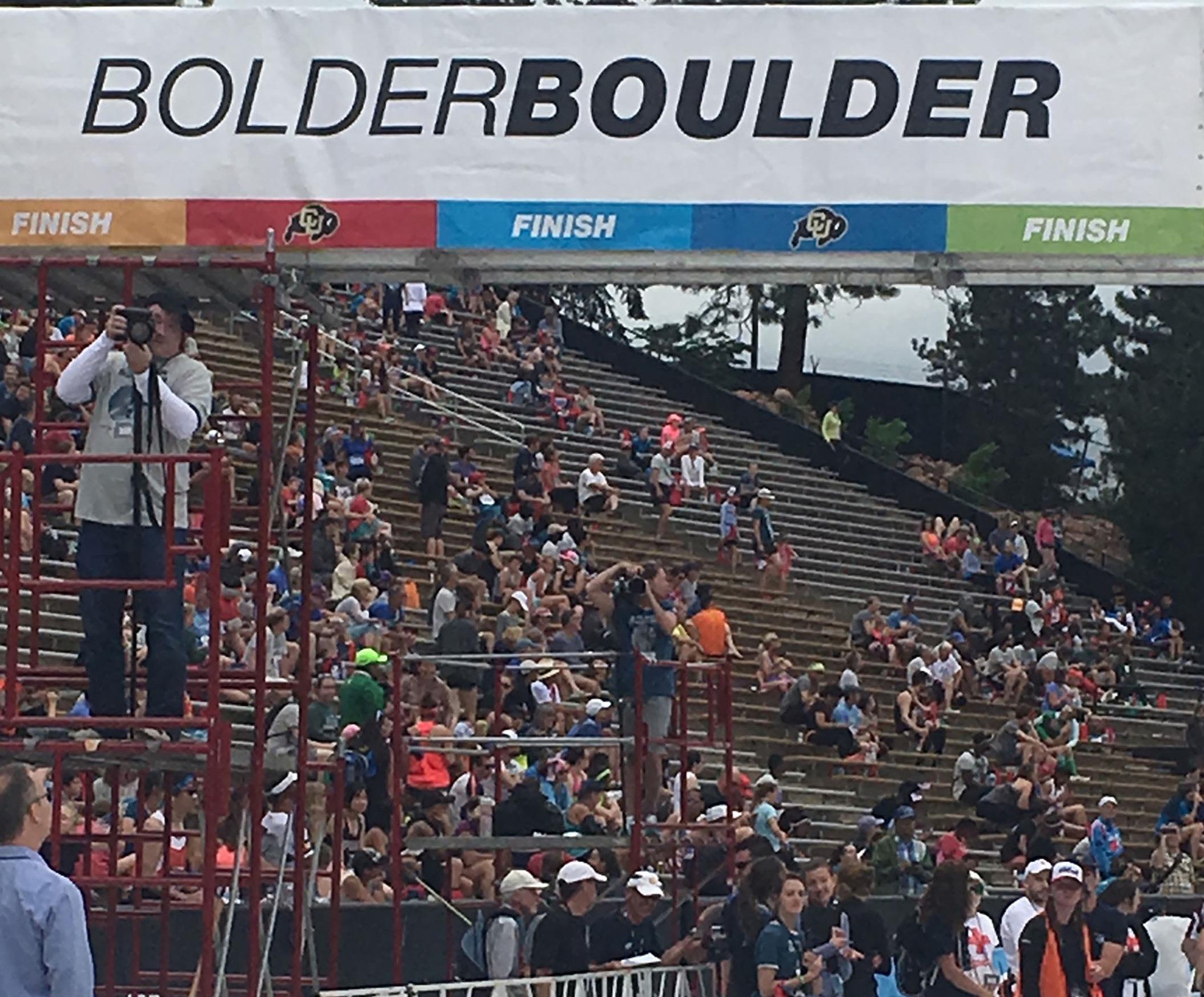
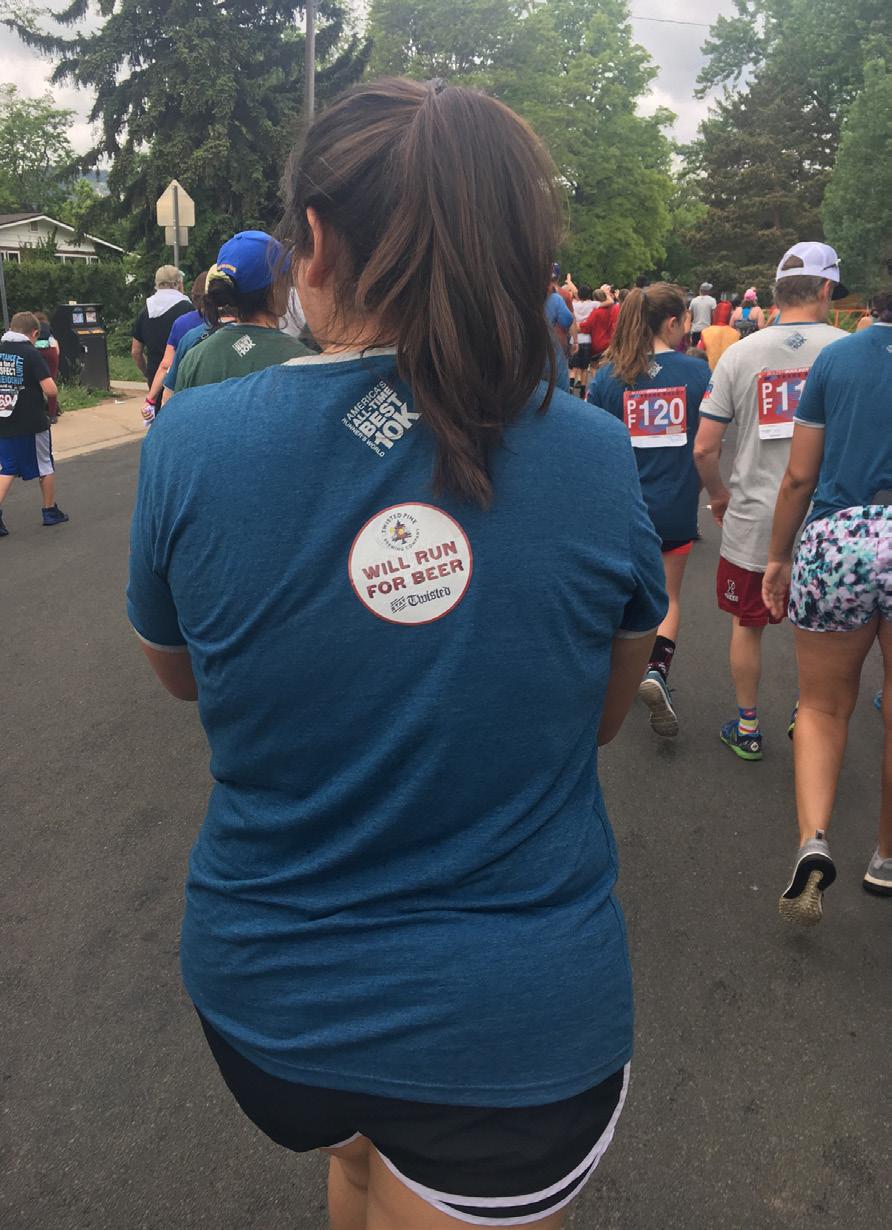
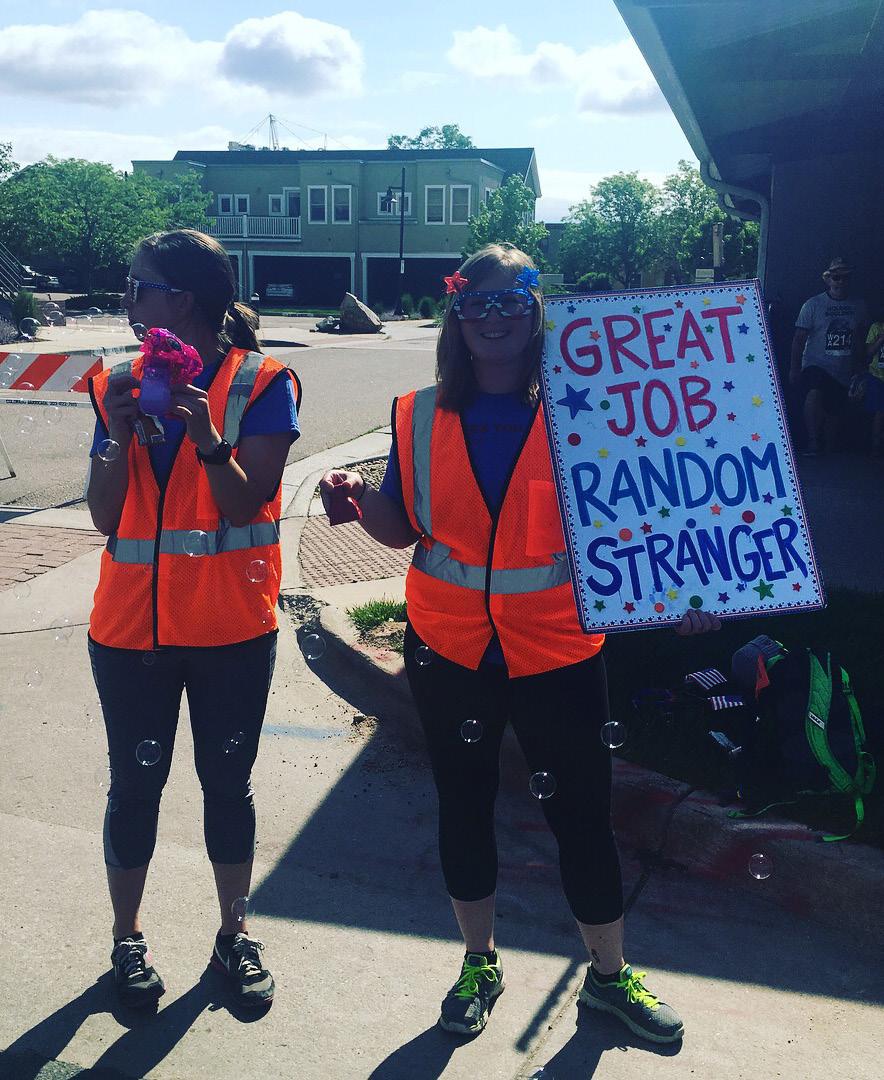
Pandemic Preventatives
By Danielle DavisRoe

Preventatives
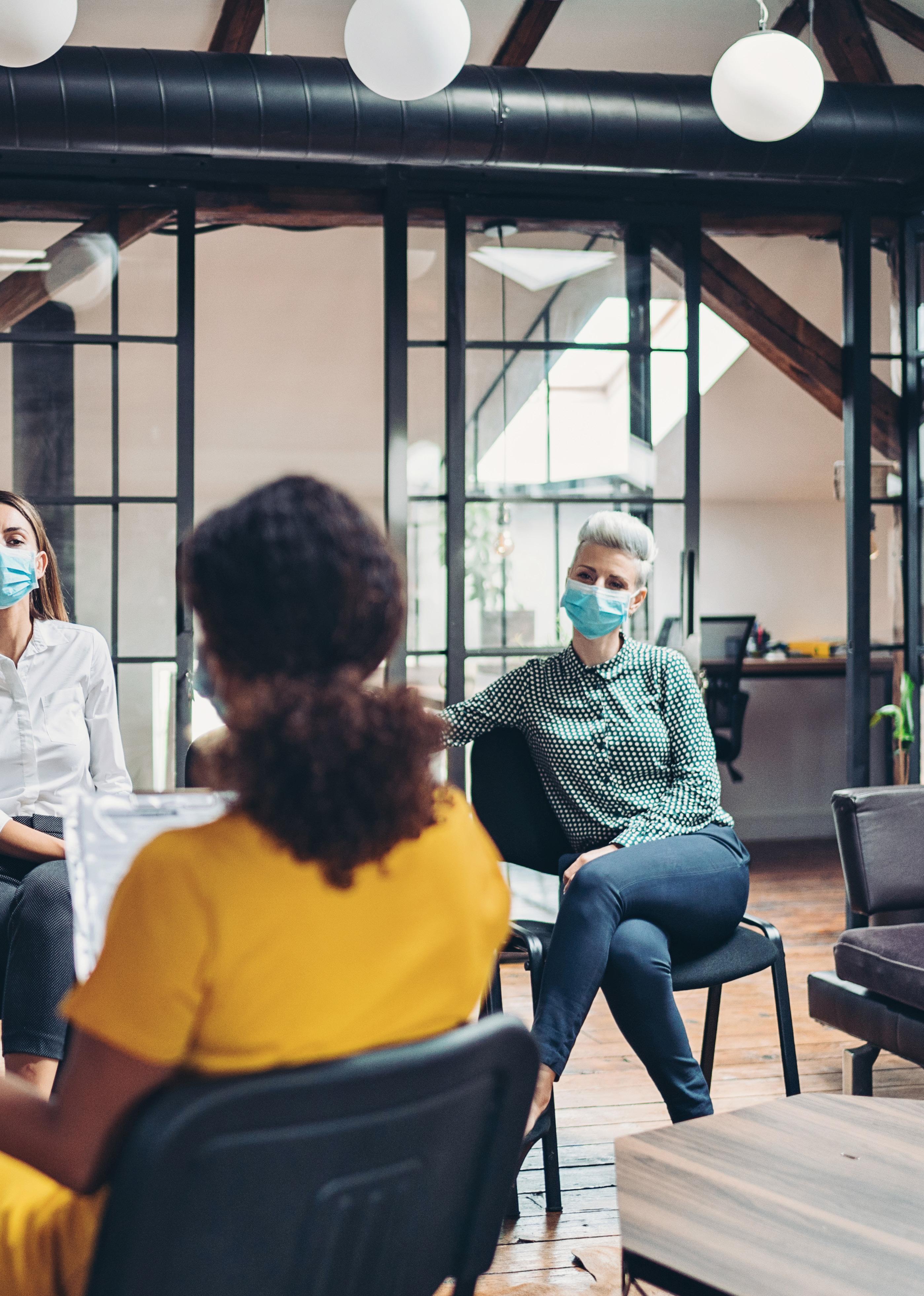
Whether you’ve been meeting with clients in person for months or are just starting to think about venturing out of your cocoon, it’s never a bad time to think about ways to better protect yourself. In the past year, a lot of technology aimed at protecting people has become mainstream. And with “safety” a buzz word and money to be made, we’ve witnessed tech additions to even the lowliest pandemic gear. Are they worth it or a waste? Let’s examine some.
High-Tech Face Masks
Love them or hate them, masks have become common place and required in most locations. I’d even wager that masks have replaced cigarette butts as the most commonly found litter. Despite ongoing vaccine rollouts, most experts say that masks are here to stay for at least awhile longer.
You’ve seen surgical masks, N95s, KN95s, and cloth masks, but have you seen high-tech face masks? If not, you might soon, as more companies are offering them. Just like the most effective practice management system is the one you’ll use, the most effective mask is the one you’ll wear.
The AirPop Active+ Halo Sensor mask, a high-tech mask, connects with an app on your smartphone. It tracks your breathing rate and local air quality index based on your location. It includes replaceable filters, and the app lets you know when it’s time to replace the filter. The AirPop has received a bevy of awards and certifications. The starter set costs $250 and each refill, good for 40 hours of use, costs $25. It may be wonderfully “designed for city life” as the website says, but did you ever expect a face mask to have an 8-page setup guide?
Others, like the MaskFone, focus on making it easier to wear a mask while on the phone. Combining Bluetooth earbuds and a microphone with a mask, the days of muffled audio may be over.
Cellphone UV Sanitizers
Experts have warned us for years that our cellphones are filthy. Prior to the pandemic, Apple warned users not to use cleaning products on iPhones because cleaners can damage the phones, particularly the touchscreens. Apple revised its website early last year to clarify that alcohol wipes can be used on hard surfaces. Despite the revision, many are hesitant to use wipes to clean their phones.
Fortunately, you can use UV light to sanitize your phone. UV light kills bacteria without damaging your phone. UV sanitizers typically work by placing your phone in a special case where the UV light is applied. Many of the cases also charge your phone while sanitizing it. Sanitizing can take as little as five minutes.
Hand Sanitizer
If you thought hand sanitizer was necessary, but boring, think again. New options are making hand sanitizer more interesting and practical. Refillable hand sanitizer dispensing wristbands ensure that you are never without hand sanitizer when you need it most (as long as you remember to refill the dispenser). Even if you don’t want to wear a dispenser on your wrist, travel sizes of hand sanitizer come with a wide variety of funny labels. Tuck one into your pocket or bag to cause your acquaintances to smile when sharing hand sanitizer before you get down to business.
Hand Washing with Smart Watches
Common advice says to wash your hands frequently, including when you enter your home. Now, smart watches can remind you to wash your hands when you get home or at pre-defined intervals. For Apple Watch users, it is as easy as turning on the handwashing reminders setting in the Apple Watch app - whenever you get home, your watch reminds you to wash your hands. On the other hand, Samsung watch users can set their watch to remind them to wash their hands at predefined intervals.
Wearable Trackers and Tracing Apps
If you’ve been notified in the past year that someone near you has contracted COVID-19, you have been left wondering whether you were in their proximity for long enough to consider yourself exposed. (In many locations, being near someone for less than 15 minutes doesn’t count as exposure.) Wearable trackers and tracing apps allow companies, schools, and sports teams to figure out how long any two people have been near each other.
Tracing apps only work for people who carry their smartphone (or wear their smart watch in some instances) with them all day. If people leave their phones in their offices and then congregate in the conference room or lunchroom, the apps aren’t effective. Wearable trackers, on the other hand, are worn as a person moves throughout their day.
Sound a little like big brother? You’re not the only one concerned. While being able to track exposure to COVID-19 makes many feel safer reopening their offices, many have raised privacy concerns. These apps and trackers only work when exposed to someone else who is also using the app or tracker. If your clients aren’t using them, your exposure to them will fly under the radar.
Temperature Scanners
While the lingering cough, difficulty breathing, and loss of taste and smell are well-known COVID-19 symptoms, one of the easiest symptoms to measure is someone’s temperature. Many businesses have been checking employee and customer temperatures at the door since the spring of last year. Others require employees to take their own temperature and self-report on a daily.
While thermometers are now back in stock most places, there are some high-tech temperature scanning options available now for firms that are back open for business. Thermal imaging systems can scan the temperature of dozens of people at once. While those are probably unnecessary for smaller firms, if you have a lot of people coming into the office at one time,
high-capacity scanners can reduce any bottle necks getting in the door. See bit.ly/2PGN8Tb for information from the FDA on using thermal imaging systems.
Symptom Checking Apps
Having employees and clients self-report symptoms may work better than full blown thermal imaging systems for smaller offices. Symptom checking apps, unlike the tracing apps discussed above, focus on identifying potential symptoms of COVID-19. Most of the apps present the employee each day with a survey related to COVID-19 symptoms. Depending on the app, the employee may be given instructions to get tested when applicable or the data may be submitted to the employer.
More Information
See citizen.org/article/workplace-privacy-after-covid-19 for a list of apps, trackers, and sensors, plus information on how each works, and who is using them.
DANIELLE DAVISROE is a Senior Consultant at Affinity Consulting Group. The Colorado Bar Association has partnered with Affinity Consulting to bring law practice management and technology-related resources to members. Visit cobar.org/mgmthq for more information on all the benefits of this partnership.
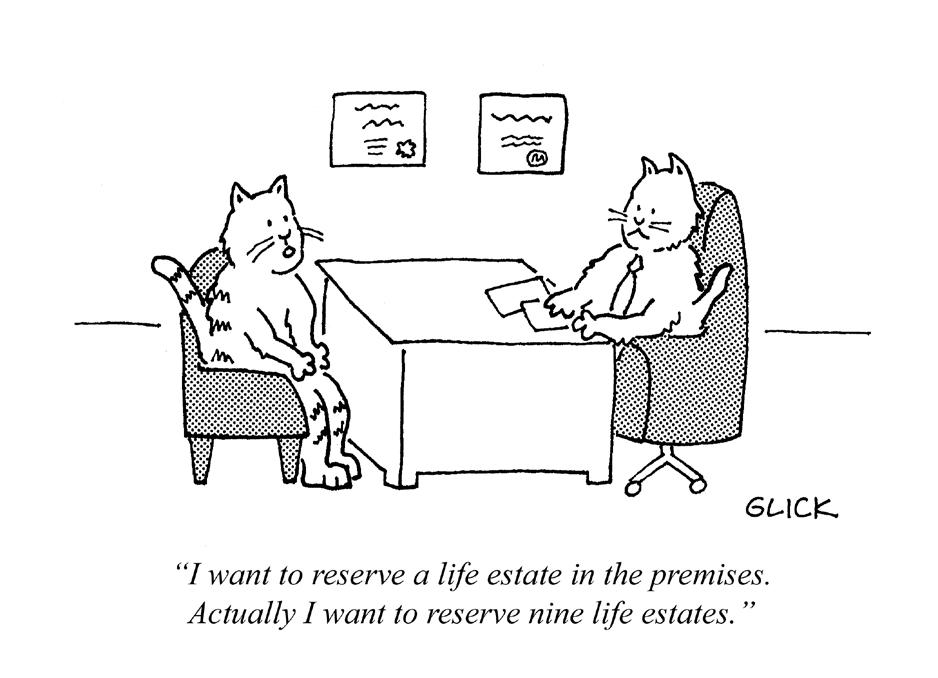
LEGAL AFFAIRS
Changes
h Holzer Patel Drennan is pleased to announce Scott Brairton as our newest Shareholder. Scott will continue his Intellectual Property practice through patent preparation and prosecution, opinion work (including freedom-to-operate, patentability, invalidity, and infringement analysis), and general IP portfolio counseling and management.
h Holzer Patel Drennan is pleased to announce Jon Deppe as our newest Shareholder. Jon will continue his practice in all aspects of Intellectual Property law, including patent and trademark prosecution, due diligence, licensing, and freedom-to-operate analysis.
h Williams Weese Pepple & Ferguson is pleased to announce that Morgan Wiener has joined the firm as a Director, effective immediately.
h Davis Graham & Stubbs LLP is pleased to announce that Nick Eaton has joined the Trial Department as an associate. He is currently admitted to practice law in Colorado.
h Regulatory attorney John “Sean” Jennings has been named a Shareholder and Director. Jennings’ practice focuses on representing businesses in matters involving regulatory law, government relations, and commercial transactions.
h Davis Graham & Stubbs LLP is pleased to announce that Andrew Stevenson has joined the Trial Department as an associate. He is not admitted to practice law in Colorado, but his application for admission is pending. He is currently admitted to practice in Illinois.
h Spencer Fane LLP is pleased to announce that attorneys Michelle Berger, Matthew (Matt) Morrison and Valentine Uduebor have joined the firm.
Good Things
h Global law firm Greenberg Traurig, LLP has expanded its Denver office with the addition of Carl F. Berglind as a shareholder in the Corporate; Health Care & FDA; and Food, Beverage & Agribusiness Practices. h The Harris Law Firm is pleased to announce that Attorney Sangeetha Mallavarapu has received her mediation training Certificate of Completion! Sangeetha completed her 40 hours of hands-on training with the Mares-Dixon mediation program. h Ballard Spahr Litigation Associate Andrew Valencia has been accepted into Downtown Denver Partnership’s 2021 Leadership Program.
In Memoriam
Victor Quinn
November 2, 1931 – February 13 2021
Victor Quinn, a prominent member of the Denver legal community, passed away at home on February 13 at age 89, surrounded by his family. He practiced law in Denver for more than 60 years, retiring only recently. Vic was born on November 2, 1931 in Wetmore, Colorado, the second of three children. His father Charlie was in the mining business and Vic grew up in the Colorado Rocky Mountains. From the age of three or four, he lived in Idaho Springs, a small mining town located approximately 40 miles from Denver. His mother, Leona Quinn, was a homemaker and active in Colorado Democratic politics. After graduation from law school at age 23, Vic joined the Denver law firm of Henry and Adams, becoming a partner in 1961. The firm expanded and was later renamed Henry, Cockrell, Quinn and Creighton, where Vic was a senior partner for more than 50 years. He was the primary outside counsel to the University of Denver for several decades and served on the Board of Trustees of the Iliff School of Theology for much of that time. In recognition of his contributions to the University, he was named a recipient of the Distinguished Service Award in 2011, and his portrait hangs prominently in the library of the Sturm College of Law. He also had the rare distinction of having scholarships established in his name at two different law schools: The Victor Quinn Endowed Scholarship at the Sturm College of Law was established by his family, and the other at the University of Colorado Law School by Flo Phillips, a friend and former law partner. He was also elected a member of the American College of Trust and Estate Counsel and was a longtime member of the National Association of College and University Attorneys and the National Association of Public Pension Attorneys.
Jeffrey Alan Goldstein
August 17, 1944–August 28, 2020
Jeffrey A. Goldstein—a tenacious attorney, civil rights advocate, judge, father, husband, brother, and friend to so many— passed away peacefully following surgery, with his wife and daughters at his side. With the support of dedicated doctors, nurses, and caregivers at Kaiser Permanente and St. Joseph Hospital, he had survived nearly four years coping with pancreatic cancer and its side effects.
Jeff began his law career in Long Beach, California, where he headed the Legal Aid Society office representing indigent clients. In Denver, he co-founded the law firm of Busacca, Goldstein, Hazleton, and Temko, which served a number of pro bono civil rights and community activist clients. He later cofounded Karp, Goldstein & Stem, and then established his own firm, Goldstein & Dodge, which primarily represented injured workers in Colorado’s workers’ compensation system. After a few years serving as special counsel in the labor law firm of Brauer, Buescher, Goldhammer & Kelman, Jeff left to serve
as an administrative law judge, and later chief judge, for the Workers’ Compensation Division, Colorado Department of Labor, until his retirement in 2018.
As members of the National Lawyers Guild during the 1970s and 1980s, Goldstein and his partners represented a number of political activists, including members of the American Indian Movement during the Wounded Knee Occupation of 1973, immigration rights activists, organizers in Denver’s Chicano movement, labor organizers, military servicemen who were against the Vietnam War, and victims of police brutality.
Mary J. Mullarkey
September 28, 1943–March 31, 2021
Mary J. Mullarkey, the first female chief justice of the Colorado Supreme Court, died on March 31, 2021, at age 77. With her passing, Colorado lost a pioneering leader who worked tirelessly to improve the justice system and how it treated people as they navigated its often-difficult pathways.
Mullarkey was born and raised in New London, Wisconsin. She initially studied mathematics at St. Norbert College, a small liberal arts college in the Green Bay area. Concluding that she would never be as mathematically inspiring as her favorite teacher, she decided to give the LSAT a shot. She received the highest score in her college’s history and was accepted into Harvard Law School. Having grown up with four brothers, Mullarkey was not intimidated by the prospect of being one of a handful of women in her law school class. She graduated from Harvard Law in 1968.
Mullarkey’s career started in the US Department of the Interior, Office of the Solicitor, where she represented federal agencies in water, environmental, and civil rights cases. She met her husband, attorney Tom Korson, through their work in Washington, D.C. Yearning for adventure and a change of scenery, the couple headed west to Colorado in 1971. Unlike many states at the time, Colorado did not have a statute or constitutional provision that confined the practice of law to men.
Gregory Kellam Scott
July 30, 1943–March 31, 2021
Colorado’s legal community suffered an enormous loss with the passing of former Justice Gregory Kellam Scott, a pioneer who leaves an important legacy. Justice Scott was the first Black person appointed to the Colorado Supreme Court and remains the only Black person to have served as a justice in Colorado.
Scott graduated from Rutgers University in 1970 from its College of Agriculture and in 1971 from its Graduate School of Education. He graduated with honors from Indiana University Law School. He began his legal career as an attorney with the US Securities and Exchange Commission in Denver and then spent over a decade teaching at the University of Denver Law School, where he was a role model for hundreds of diverse law students. He went on to establish a nationwide practice representing minority-owned and other small business firms.
Governor Roy Romer appointed Scott to the Colorado Supreme Court in 1992. During his time on the Court, Justice Scott authored several precedent-setting opinions, including a concurrence in the landmark case Evans v. Romer, which invalidated Amendment 2, a voter initiative that prevented local governments from enacting ordinances prohibiting discrimination based on sexual orientation. He also authored the opinion for Hill v. Thomas, a landmark case in which the Court upheld legislation that allowed a buffer zone around anyone entering or exiting healthcare facilities to avoid violence by picketers.
Justice Scott resigned from the Court in 1999. Upon leaving the Court in 2000, he served as vice president and general counsel of Kaiser-Hill L.L.C., the company that cleaned up the former Rocky Flats nuclear weapons plant in Jefferson County. He and his wife Carolyn returned to Indiana following their time in Colorado, and he was appointed executive director of the Indiana Civil Rights Commission in 2005.
Roger Edward Stevens
November 7, 1929–February 7, 2021
The Boulder legal community lost one of its true Renaissance men with the passing of Roger E. Stevens on February 7, 2021. Roger loved learning and did so until his last day.
Roger graduated from the University of California Los Angeles cum laude as an English major in 1951, attended the University of Colorado Law School, and then practiced law in Boulder County for more than 60 years. He grew to be an accomplished lawyer in areas as diverse as property rights and title searches, oil and gas, real estate, mining/water law, bankruptcy, estate planning, constitutional law, labor law, tax, murder cases, family law, aviation wrongful death cases, and ACLU volunteer legal work. He was brilliant and blessed with a photographic memory.
Roger was fiercely independent and liked to march to the beat of his own drum. He hired female lawyers when others discriminated. He became a lawyer to help people and believed if you did a good job, clients took care of you. Roger was paid in kind by clients who could not afford his services, including with cords of wood, bales of hay, and goose eggs (literally). Such was the practice of law in Boulder from the 1950s through the 1970s.
Roger excelled as a pianist extraordinaire and a guitarist, and he sang. He was a fifth-degree black belt and Judo Sensei who competed for a position on the US Olympic team, and a gymnast (eager to teach handstands to all). He studied and practiced Jin Shin Jyutsu therapy, meditated, and embodied the Sufi smile. Roger traveled to Argentina to dance tango and loved to folk dance locally. He studied Hebrew, Arabic, Portuguese, Spanish, Japanese, and Gaelic. He was an amateur poet and loved Irish limericks, and he could recite “Jabberwocky” by heart. Roger also and owned and rode an enviable motorcycle collection. He lived and played in the mountains, and the outdoors was his sanctuary. He loved to swim and was an avid hiker, cross-country skier, and environmentalist. Roger embraced friends and partners, loved his family, and cherished more than anything his beloved wife, Philomena.
10 QUESTIONS

Anthony J. Zarsky
Woody Law Firm, LLC
EDITOR'S NOTE Do you know a DBA member who should be featured?
Email nominations to Heather Folker at hfolker@cobar.org.
10 Questions with Anthony J. Zarsky
1. Where did you go to law school and where are you currently working?
I attended the Pennsylvania State University, Dickinson School of Law. I am presently an associate attorney at Woody Law Firm, LLC.
2. Why did you become a lawyer?
Injustice has always fueled me. I am an empathetic person and found family law suited me well during law school. There is nothing like the feeling of winning at trial, especially when you helped a victim of domestic violence obtain justice in the form of a protection order.
3. What are five adjectives that you would ascribe to yourself? Kind, Empathetic, Driven, Resourceful, Funny
4. What’s the best advice you’ve ever been given?
Don’t let someone’s inability to see your worth define you.
5. Favorite childhood memory?
As a kid, my Italian grandmother would pick me up and have me over to “help her cook dinner.” Looking back on it, it was not easy to have little hands in the kitchen getting in the way. As an adult, I realize she didn’t need the help but included me out of love and a desire to help me learn a valuable life skill.
6. How do you de-stress?
After a long day at the office, nothing melts the stress of the day away quite like a warm bath.
7. What has been one of the biggest challenges that you have had to overcome?
Being a gay man. The “pink ceiling” can make achieving your dreams more difficult. People have biases as to what you are and what you are not depending on how you look, sound, and carry yourself compared to how they think you should do so. I want to be judged on my character and abilities, not predetermined limits based solely on outdated stereotypes.
8. What are your hobbies outside of the law?
Cooking, traveling, gardening, politics, camping, and being a cat dad.
9. If you could have dinner with any historical figure, who would you pick and why?
Abraham Lincoln, without a doubt. He faced failure after failure in his life before becoming president and used his wisdom to advance the cause of equality that reverberates even today. Perseverance is the antidote to broken dreams.
10. Any favorite legal cases?
Obergefell v. Hodges. “Their hope is not to be condemned to live in loneliness, excluded from one of civilization’s oldest institutions. They ask for equal dignity in the eyes of the law. The Constitution grants them that right.”
Did you know that your membership includes 24 free CLE credits per year via the MGMT HQ program? What is MGMT HQ you say?

The CBA has partnered with Affi nity Consulting Group to bring law practice management and technology-related resources to members. Affi nity Consulting Group specializes in strategic technology and management solutions for law fi rms and legal departments of all sizes. MGMT HQ doesn’t just provide free CLEs, they also give advice.
Be sure to check out the webpage cobar.org/mgmthq.
CHECK OUT THE UPCOMING WEBINARS AND REGISTER AT COBAR.ORG/CALENDAR.
JUNE 1, NOON TO 1 PM Turning Molasses into Money: Making the Most of Downtime
Most lawyers have cyclical down periods. It’s what you do with that time that counts. In this webinar we talk about how to maximize your downtime to invest in business and hit the ground running when work picks back up.
JUNE 15, NOON TO 1 PM Creating a Client Intake Form
This webinar walks you through how to create a client intake form that will capture everything you need using tools built into Microsoft Word and your PDF software.
JULY 6, NOON TO 1 PM Check It Out
Lawyers are nearly as terrible at organization as doctors are at penmanship. In this seminar, learn how to combine productivity techniques, apps, and good, old-fashioned book-learning to organize your work environment, including documenting processes with checklists and fl ow charts to ensure smooth operation.
JULY 20, NOON TO 1 PM If You Come for the King, You Best Not Miss: Succession and Contingency Planning for Lawyers
Retirement takes planning! The most successful turnovers, require a more gradual approach than you might think. In this webinar, you will learn ways to successfully turn over the keys to your kingdom all while protecting your fi rm from the unexpected.
AUGUST 3, NOON TO 1 PM I Know I Need It
What do you need out of your PDF software? In this webinar, we talk about the most important features to look for, demonstrate how to use them in common PDF applications, and explain what your options are.

